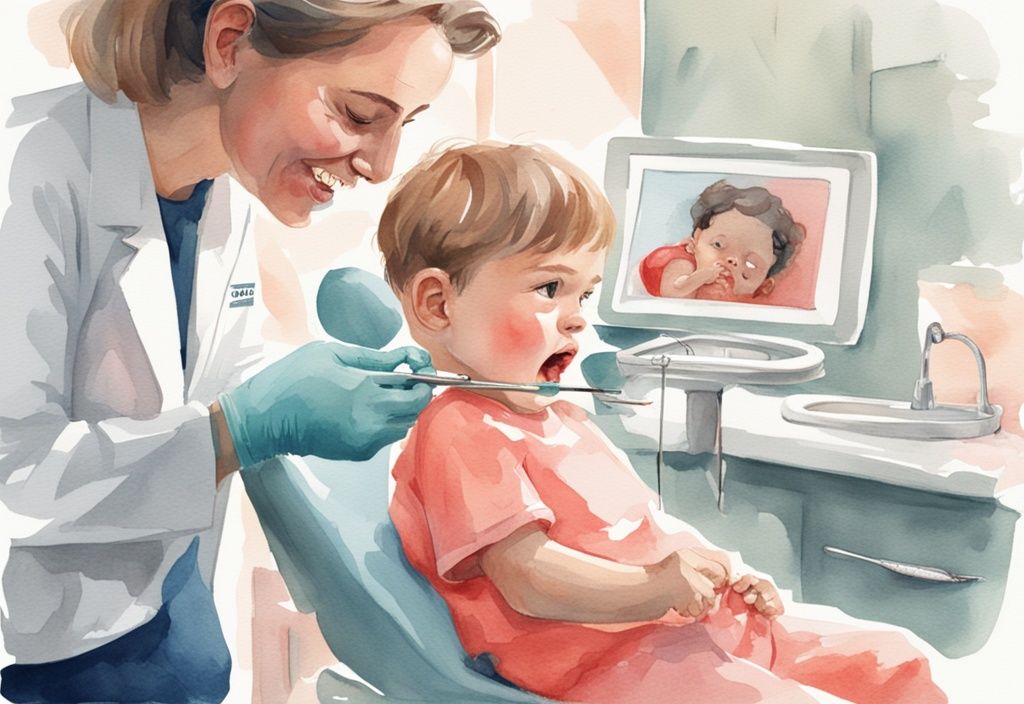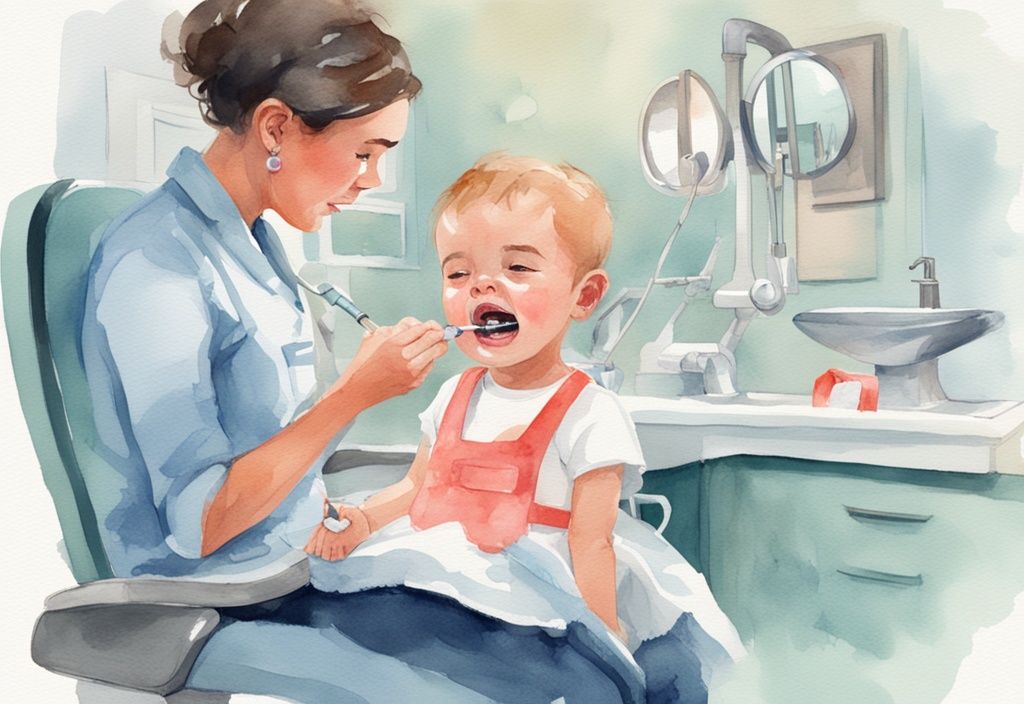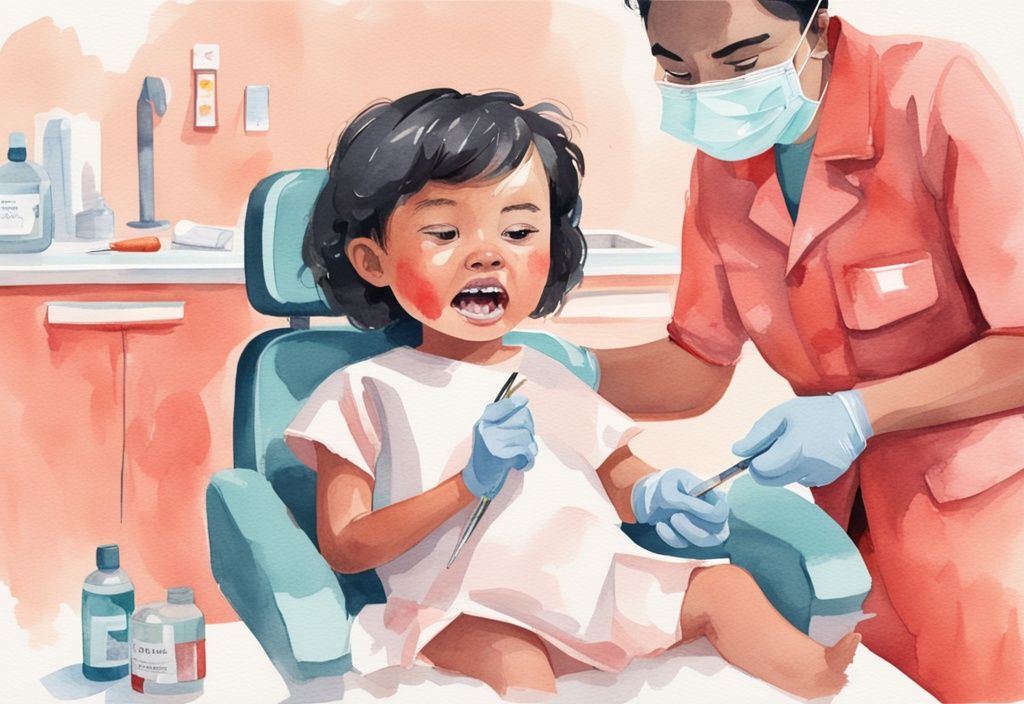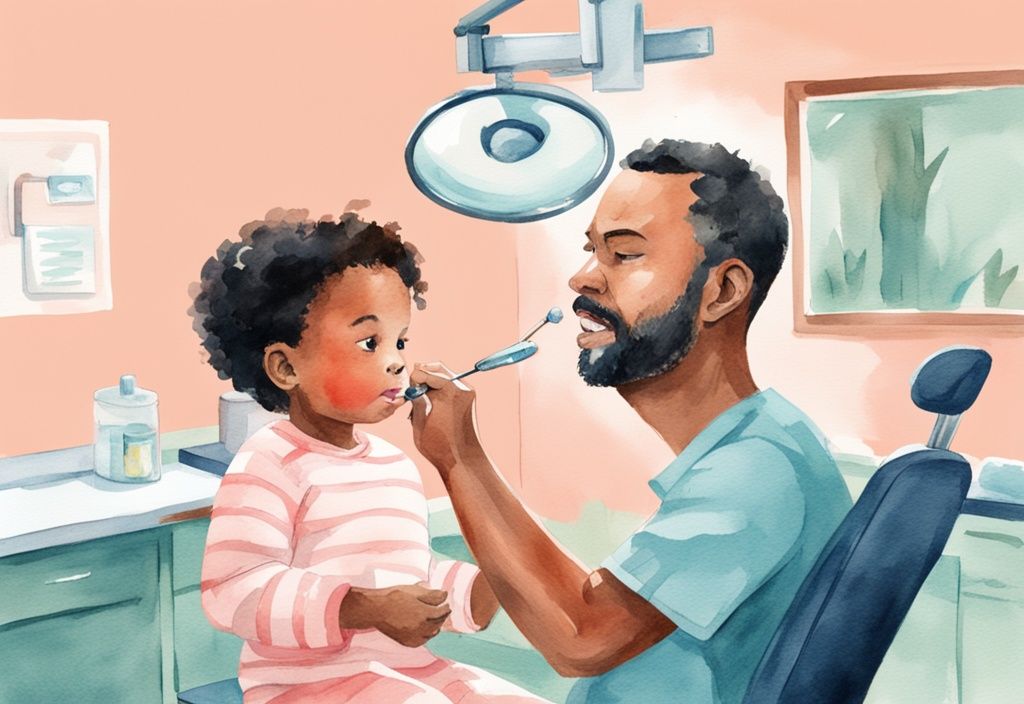Hey there, fellow parents! Ever found yourself wondering, “Does a dead baby tooth need to be pulled?” It’s a question that’s kept me up at night too. A necrotic baby tooth isn’t just uncomfortable for our little ones, it can also lead to bigger dental issues down the line.
In this article, we’ll delve into the causes, symptoms, and treatment options for dead baby teeth. We’ll explore whether extraction is necessary or if simply keeping an eye on it is enough. We’ll also share some tips on maintaining your child’s oral hygiene to prevent future dental problems.
So, let’s navigate this tricky terrain together, ensuring our kiddos keep flashing those healthy, happy smiles as they grow!
Understanding a Dead Baby Tooth
Sometimes, as parents, we find ourselves puzzled by the mysteries of our little ones’ dental health. One such mystery is the dead baby tooth. This section will help unravel what it means when a baby tooth loses its vitality, why it happens, and how to decide if it needs to be pulled.
What is a Dead Baby Tooth?
Imagine this: your child’s tooth is like a tiny tree, with roots and a life of its own. A dead baby tooth, or necrotic tooth, is what happens when that little tree loses its life-giving sap, the blood supply. Without it, the pulp—the heart of the tooth filled with nerves and blood vessels—dies. This can happen due to decay, a bump to the mouth, or even an infection. When the pulp is gone, the tooth can’t do its job anymore, which brings us to the big question: does a dead baby tooth need to be pulled? Knowing more about this can help you make the best choice for your child’s smile.
Causes and Symptoms of a Dead Baby Tooth
There are a few culprits behind a dead baby tooth. It might be severe tooth decay sneaking its way to the pulp, a tumble during playtime, or pesky infections. Being on the lookout for symptoms is like having a superpower for early action.
- Discoloration: The tooth might turn dark yellow, gray, or even black.
- Pain: Your little one might complain about a toothache.
- Swelling: Puffy gums can be a sign something’s up.
- Gum Boils or Abscesses: These can pop up like unwanted guests.
- Bad Breath: Persistent bad breath might be a clue.
These signs aren’t just bothersome; they make us wonder if pulling the tooth is the best way to stop further trouble. Jumping on these symptoms quickly is key to keeping your child’s mouth healthy and their smile bright. Remember, we’re all in this parenting journey together, and taking care of those tiny teeth is just one of the many adventures we share.

Should You Pull a Dead Baby Tooth?
Sometimes, as parents, we find ourselves facing unexpected dental dilemmas with our little ones. One such question that might pop up is: Does a dead baby tooth need to be pulled? Let’s explore this together, considering both the potential risks and the well-being of our children.
When is Extraction Necessary?
Deciding whether to pull a dead baby tooth can feel a bit daunting, but it often boils down to the potential risks involved. If that little tooth is causing your child discomfort or there’s a looming risk of infection, it might be time to consider extraction. A dead baby tooth can sometimes lead to complications like pain or infection, which could impact your child’s overall health.
Sometimes, the readiness of the permanent tooth waiting in the wings plays a crucial role. If it’s ready to make its grand entrance, removing the dead tooth could pave the way for a smoother transition. This can help prevent misalignment or other dental issues down the road.
Factors Influencing the Decision to Pull a Dead Baby Tooth
Several factors come into play when deciding if a dead baby tooth should be pulled. Keep an eye out for symptoms like pain, swelling, or discoloration, as these can signal a higher risk of infection, making extraction more likely. It’s also essential to consider how this affects your child’s oral health, especially regarding the timing of when the tooth would naturally fall out.
A chat with a pediatric dentist can be incredibly helpful. They bring expert guidance tailored to your child’s unique situation, ensuring that the decision aligns with maintaining optimal oral health. Their insights can support the proper development of those precious permanent teeth. Remember, you’re not alone in this journey—there’s a whole community of parents and professionals ready to support you.
What Happens If a Dead Baby Tooth is Not Pulled?
When pondering the question, does a dead baby tooth need to be pulled, it’s essential to consider the potential consequences of leaving it untreated. Understanding these risks can help you make the best decision for your child’s oral health.
Potential Risks and Impact on Oral Health
Picture this: a dead baby tooth can be like a tiny, unwelcome guest in your child’s mouth. It’s not just hanging out quietly; it’s inviting bacteria to party, which can lead to infections. And let’s face it, nobody wants that kind of drama! These infections can spread beyond the tooth, affecting the gums and even sneaking into the bloodstream, causing more serious health issues. It’s like a domino effect, and we definitely want to avoid that.
Leaving a dead baby tooth untreated can also stir up a storm of oral health problems. Imagine your little one struggling to eat their favorite snacks or having trouble chatting away because of the discomfort and pain from a decaying tooth. Not fun, right? Plus, there’s the risk of abscesses forming, which are not only painful but also demand immediate attention. These scenarios highlight why it’s crucial to consider whether a dead baby tooth needs to be pulled. It’s all about preventing long-term health issues and ensuring your child’s smile stays bright and healthy.
Alternatives to Pulling a Dead Baby Tooth
When faced with the question, does a dead baby tooth need to be pulled, it’s important to explore all the options available. Sometimes, the best approach isn’t immediate extraction, and there are gentler alternatives that might suit your little one’s needs.

Monitoring the Tooth
One approach is simply keeping a watchful eye on that little tooth. If there are no signs of infection, you might choose to let it be for a while. Think of it as giving the tooth a chance to hang around a bit longer! Regular dental check-ups become your best friend here. They help catch any sneaky issues early on, ensuring your child’s smile stays healthy and happy. By monitoring the tooth’s health, you can avoid unnecessary interventions and let nature take its course. This way, the tooth can remain until it decides it’s time to go.
Potential Non-Extraction Treatments
Sometimes, even if a dead baby tooth doesn’t need to be pulled right away, there are other treatments worth considering. Although root canals aren’t usually on the menu for baby teeth, a procedure called a pulpotomy might be an option. This involves removing the damaged pulp but keeping the tooth intact, which can help prevent further trouble. And if extraction does become necessary, don’t worry! Space maintainers can step in to save the day. They keep the gap open for the permanent teeth to come in just right, ensuring everything stays in line. By exploring these alternatives, you can make informed decisions about your child’s dental care, feeling confident and supported every step of the way.
Preventing Dead Baby Teeth
As parents, we all want to do our best to keep those little smiles healthy and bright. Preventing dead baby teeth is an important part of that journey. By focusing on good oral hygiene, a balanced diet, and regular dental visits, we can help our children maintain strong and healthy teeth.
How to Maintain Good Oral Hygiene for Your Child
Let’s dive into the nitty-gritty of oral hygiene. Establishing a consistent routine is key. Encourage your child to brush twice a day with fluoride toothpaste. It’s like giving their teeth a little superhero shield, strengthening the enamel and keeping decay at bay. And don’t forget about flossing! It’s a bit like a treasure hunt for those pesky food particles hiding between teeth.
Now, let’s talk about food. Sugar might be sweet, but it’s no friend to our kids’ teeth. Limiting sugary snacks and drinks can make a world of difference. Think of it as protecting their teeth from a sugar-fueled attack. Instead, offer a rainbow of fruits and veggies, and keep water as the go-to drink. It’s like giving their teeth a refreshing splash of health.
Regular dental check-ups are like a wellness check for your child’s mouth. These visits help catch any sneaky issues early on. A pediatric dentist can provide professional cleanings and personalized advice. Plus, it’s the perfect time to chat about any concerns, like whether a dead baby tooth needs to be pulled. Remember, these visits are all about ensuring your child’s teeth grow strong and healthy.
FAQ
Can a Dead Baby Tooth Affect Permanent Teeth?
Oh, the wonders of childhood! But sometimes, those little teeth can bring big questions. A dead baby tooth can indeed affect the alignment and health of those precious permanent teeth waiting to make their debut. If not taken care of, it might lead to misalignment or other dental hiccups. That’s why it’s crucial to figure out if a dead baby tooth needs to be pulled. Remember, a little attention now can save a lot of trouble later!

Is it Painful to Pull a Dead Baby Tooth?
Now, I know the thought of pulling a tooth might make you wince. But don’t worry too much! Pulling a dead baby tooth might cause some discomfort, but with local anesthesia, the procedure is made as gentle as possible. The goal is to ensure that your little one feels comfortable and at ease. It’s all about making sure any necessary extraction is a breeze rather than a storm.
How Can I Tell If My Child’s Tooth is Dead?
Ah, the detective work of parenting! Spotting a dead tooth can sometimes feel like solving a mystery. Look out for signs like discoloration, pain, swelling, gum boils, abscesses, and bad breath. If you notice any of these clues, it’s time to put on your parenting cape and consult a dentist. They’ll help you determine if that dead baby tooth needs to be pulled. Remember, you’re not alone in this—there’s always help around the corner!
Conclusion
Deciding whether a dead baby tooth needs to be pulled can feel like one of those tricky parenting puzzles we often face. It’s not just about the tooth itself; it’s about considering the bigger picture.
First and foremost, we need to think about the risk of infection. This isn’t just about oral health; it can impact your child’s overall well-being. If your little one is experiencing pain or discomfort, it might be a sign that something more is going on, and that’s worth looking into.
Another piece of this puzzle is how the permanent teeth are developing. A dead baby tooth can sometimes throw a wrench in the works, potentially affecting the alignment and health of those new teeth waiting to make their debut. So, timely action is key!
Here’s where a pediatric dentist comes in. These professionals are like the superheroes of the dental world for our kiddos. They can give a thorough assessment and suggest the best path forward, whether that’s pulling the tooth or exploring other options.
By reaching out to an expert, you’re making sure you’re doing what’s best for your child’s smile and health. And remember, you’re not alone in this. We’re all navigating these parenting challenges together, and it’s okay to lean on the experts when you need to. You’re doing great, and your child’s bright, healthy smile is just around the corner!


